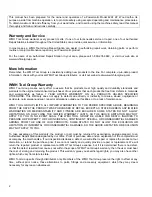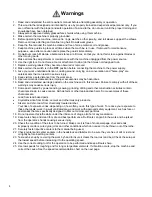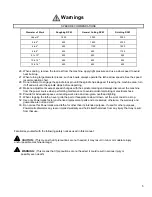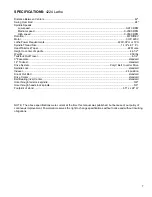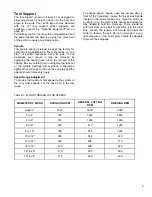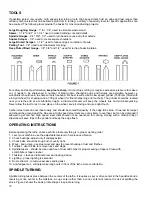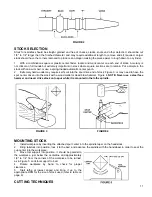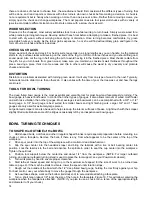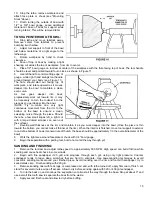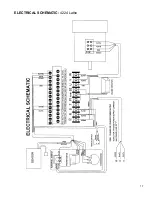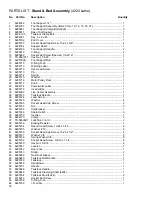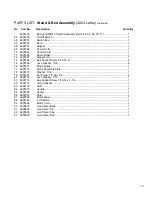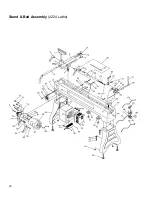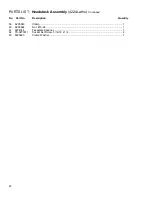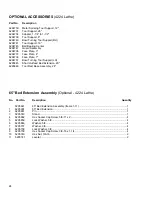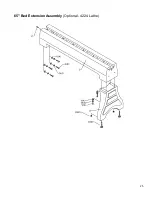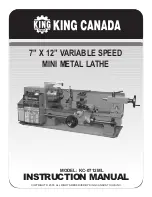
13
PARTING OFF:
1.
Use parting tool.
2. Adjust lathe speed to lower RPM for
parting through a workpiece.
3. Place tool on tool support and raise the
handle until it starts to cut and continue to
cut towards the center of the workpiece.
4. Loosely hold on to the piece in one
hand as it separates from the waste wood.
SANDING and FINISHING:
Leaving clean cuts will reduce the amount of
sanding required. Adjust the lathe to a
low
speed
, and begin with fine sandpaper (120
grit or finer). Coarser sandpaper will leave
deep scratches that are difficult to remove,
and dull crisp details on the spindle.
Progress through each grit without skipping grits (e.g., do not jump from 120 grit to 220 grit). Fold the sandpaper into
a pad; do not wrap sandpaper around your fingers or the workpiece.
To apply a finish, the workpiece can be left on the lathe. Turn off the lathe and use a brush or paper towel to apply
the finish. Remove excess finish before restarting lathe. Allow to dry and sand again with 320 or 400 grit sandpaper.
Apply second coat of finish and buff.
FACE PLATE and BOWL TURNING
Face plate turning is normally done on the inboard side of the headstock over the bed. Larger workpieces must be
turned on the outboard side (remove tailstock and tool support, and move headstock to opposite end of bed).
MOUNTING STOCK
Use of a face plate is the most common method for holding a block of wood for turning bowls and plates:
1.
Select stock at least 1/8" to 1/4" larger than each dimension on the finished workpiece.
2.
Always select the largest diameter face plate that can be used for the workpiece to be turned.
3.
True one surface of the workpiece for mounting against the face plate.
4. Using the face plate as a template, mark the location of the mounting holes, and drill pilot holes of the
appropriate size. Face plates are drilled for No. 12 screws. (Phillips and square drive screws will hold up better than
slotted screws. Sheel metal screws are case hardened with deeper and sharper threads than wood screws.)
If the mounting screws on the face plate interfere with the
workpiece, a glue or waste block can be used.
5. Make a block the same diameter as the face plate, Figure 9.
Both glue block and workpiece should have good flat surfaces for
gluing.
6.
Glue the block to the workpiece. Avoid using brown paper or
newspaper between the block and workpiece. It may work fine if
you are using scrapers, but a slight catch with a bowl gouge can
separate the two.
NOTE: When using a glue block, be careful with the
adhesive you select. Dry workpieces can be bonded with ordinary
white or yellow glue but must be clamped to ensure a good bond.
Green workpieces require cyanoacrylate (super glue) or a
urethane adhesive. Urethanes will require clamping.
FACEPLATE OR CHUCK?
While faceplates are the simplest, most reliable method of
holding a block of wood for turning, chucks can also be used. As


